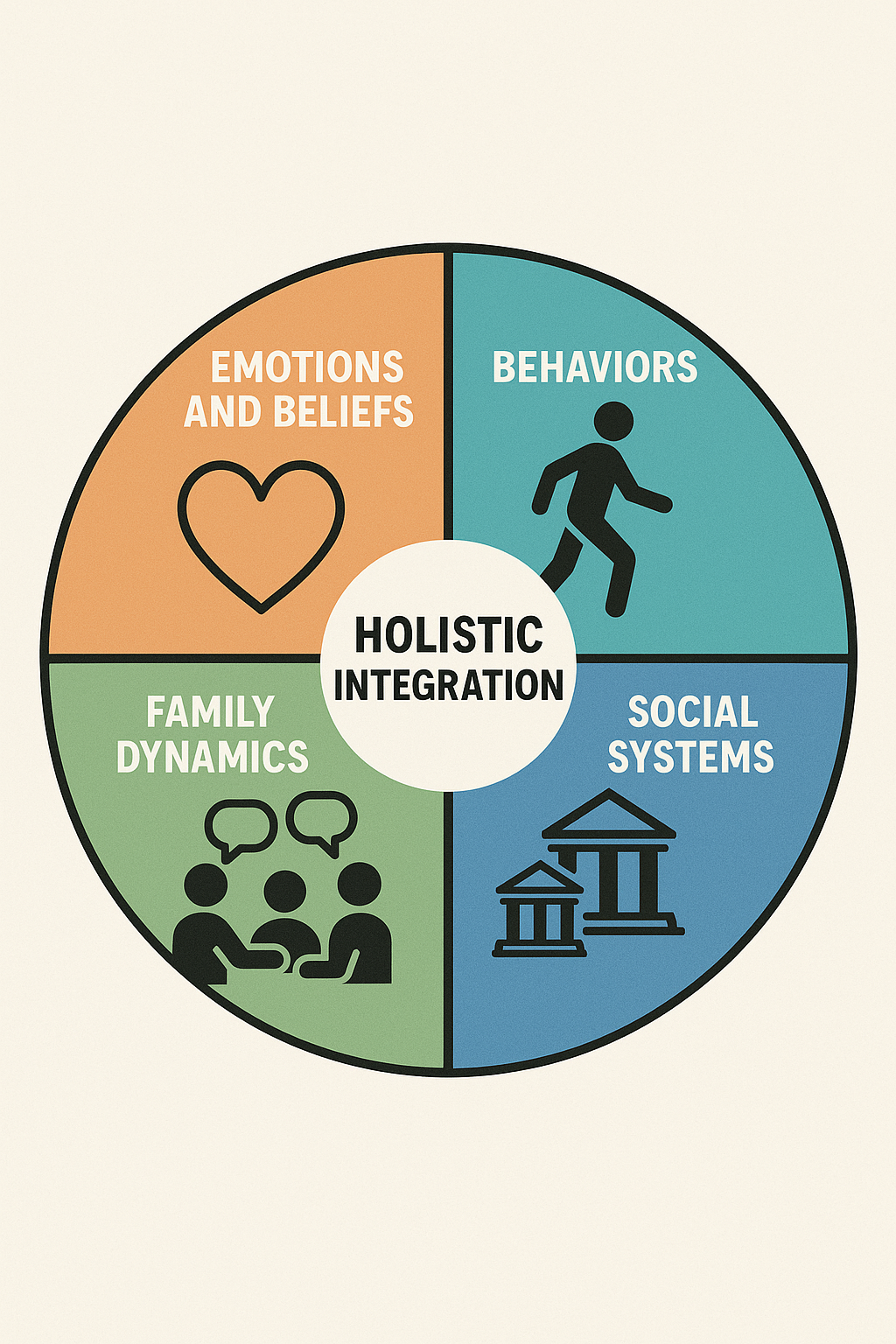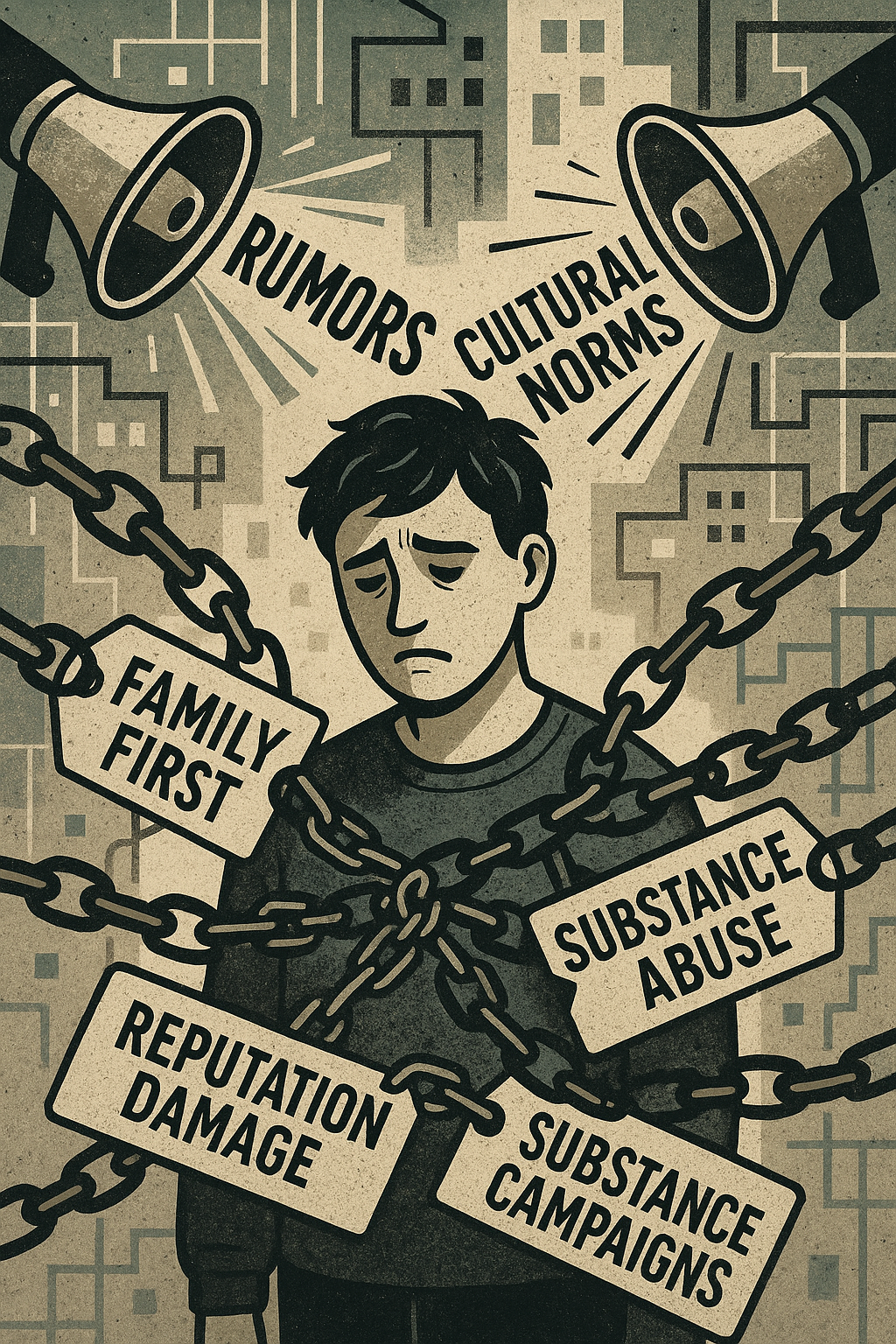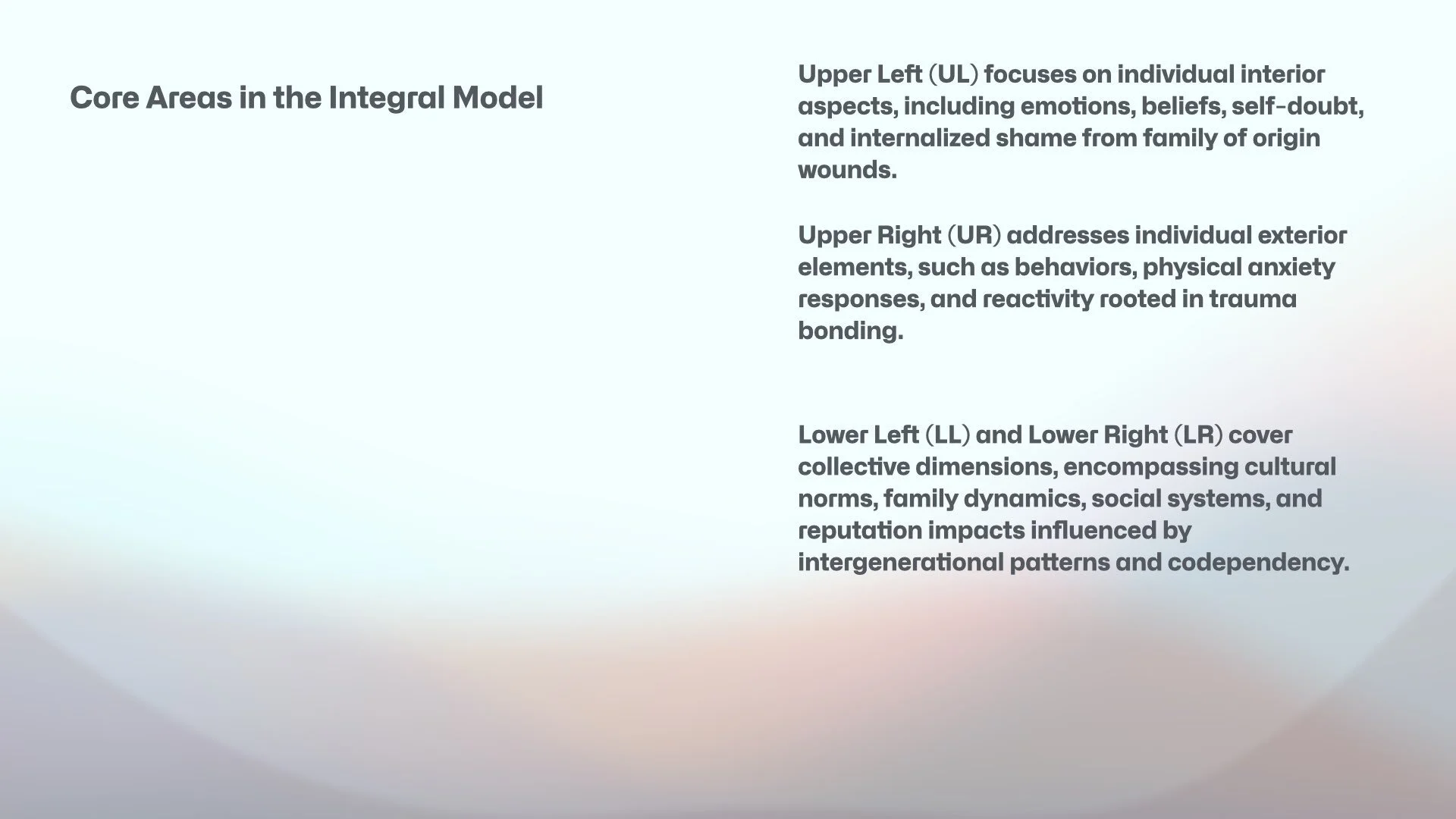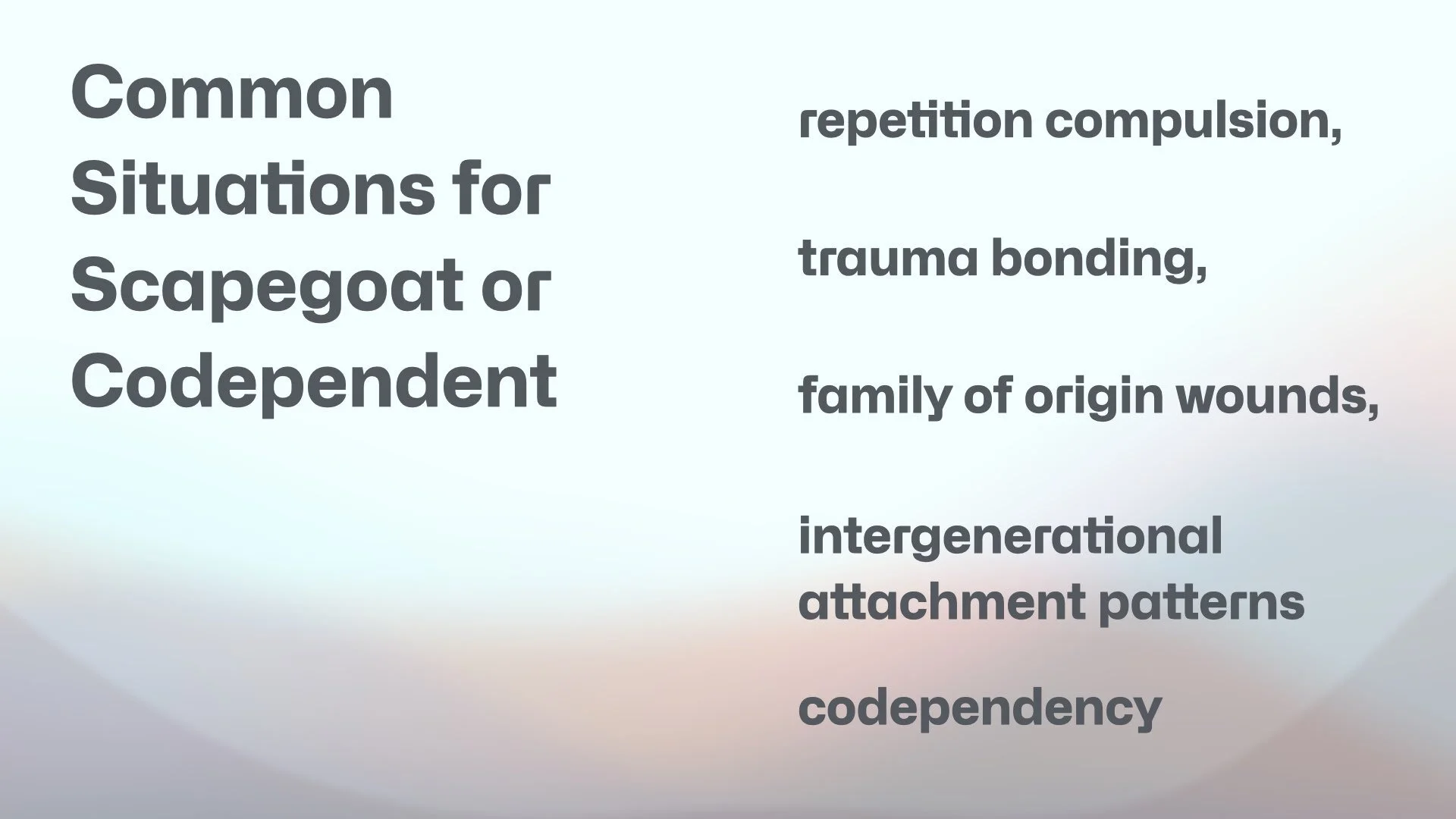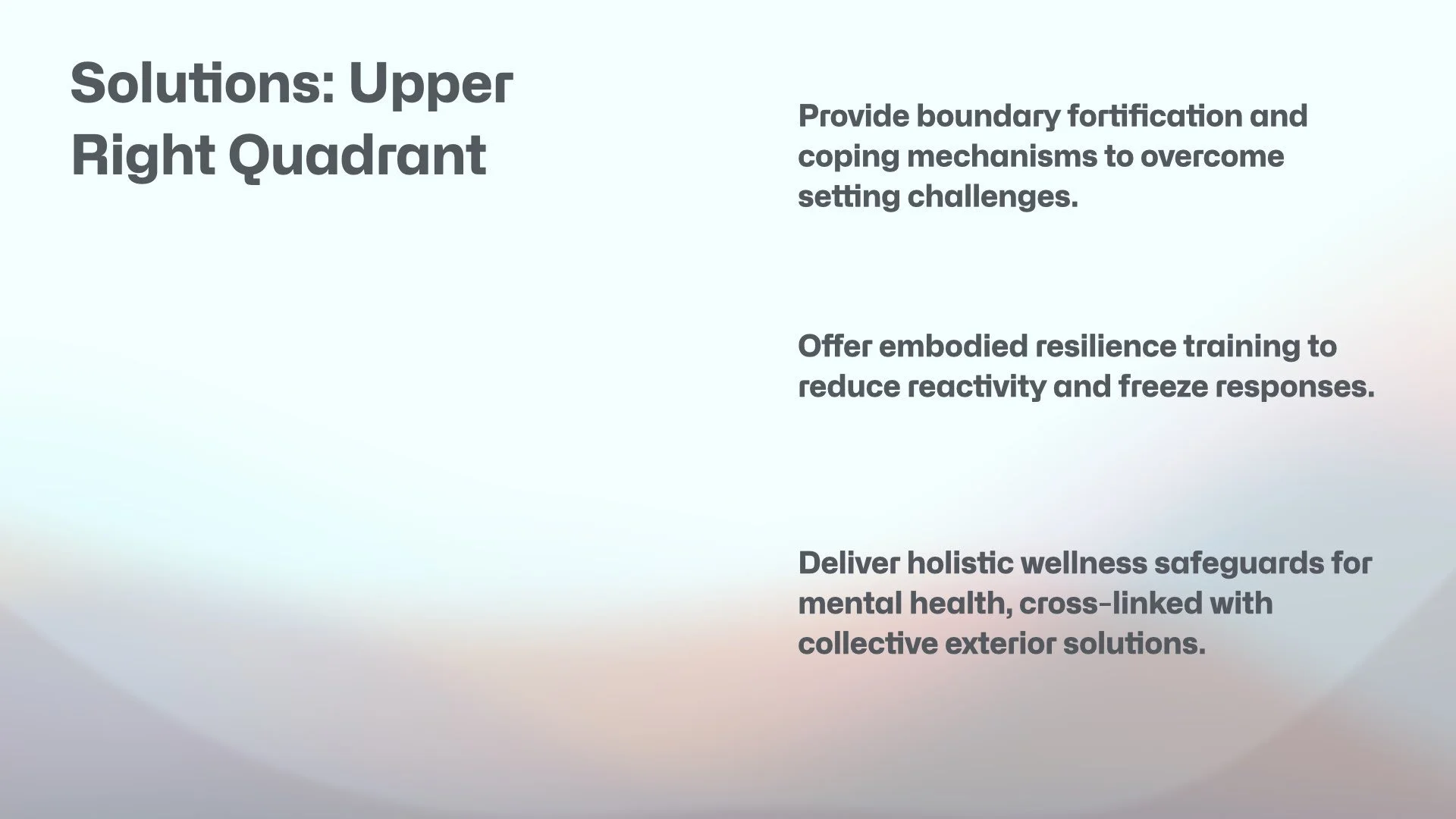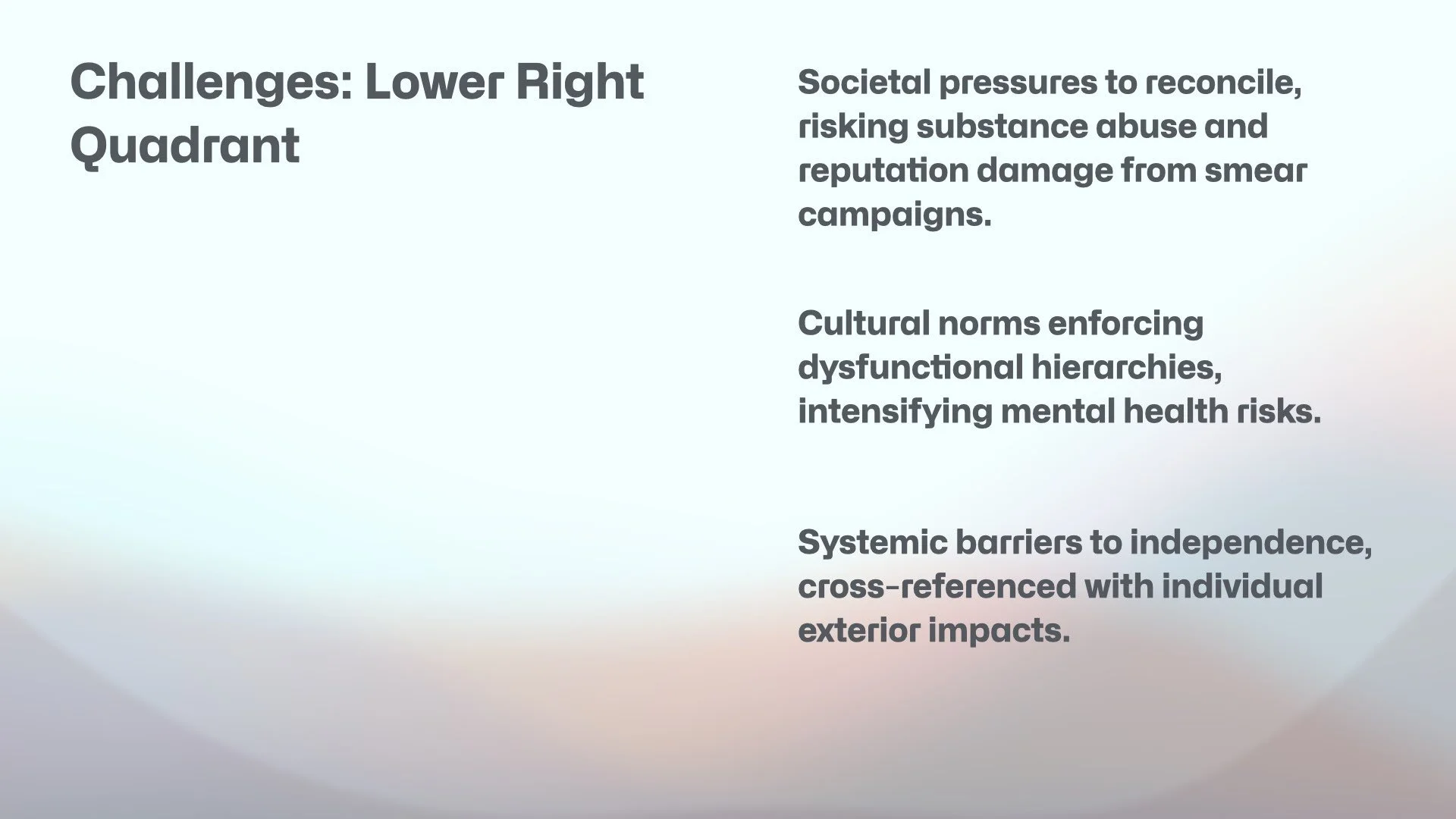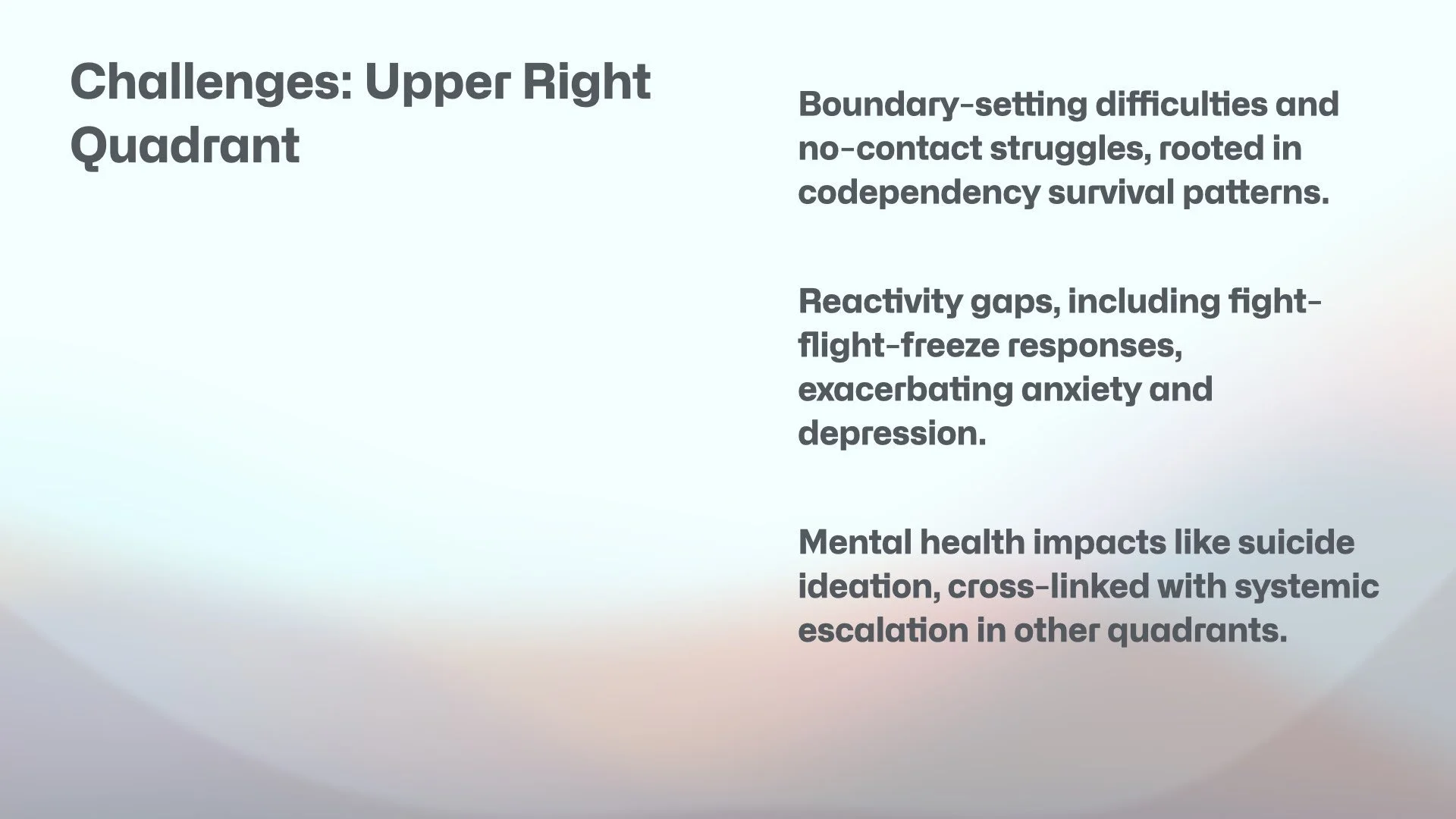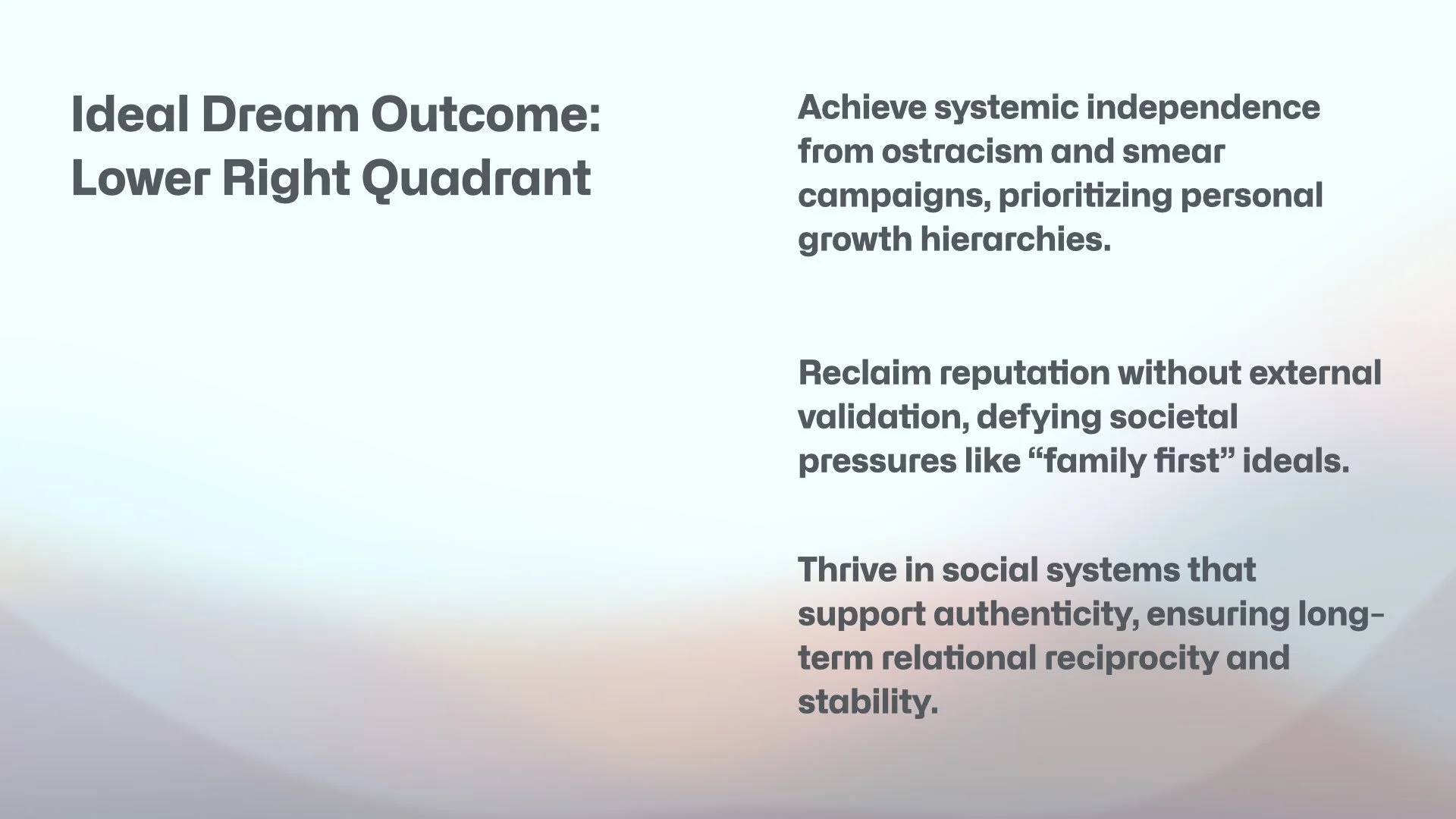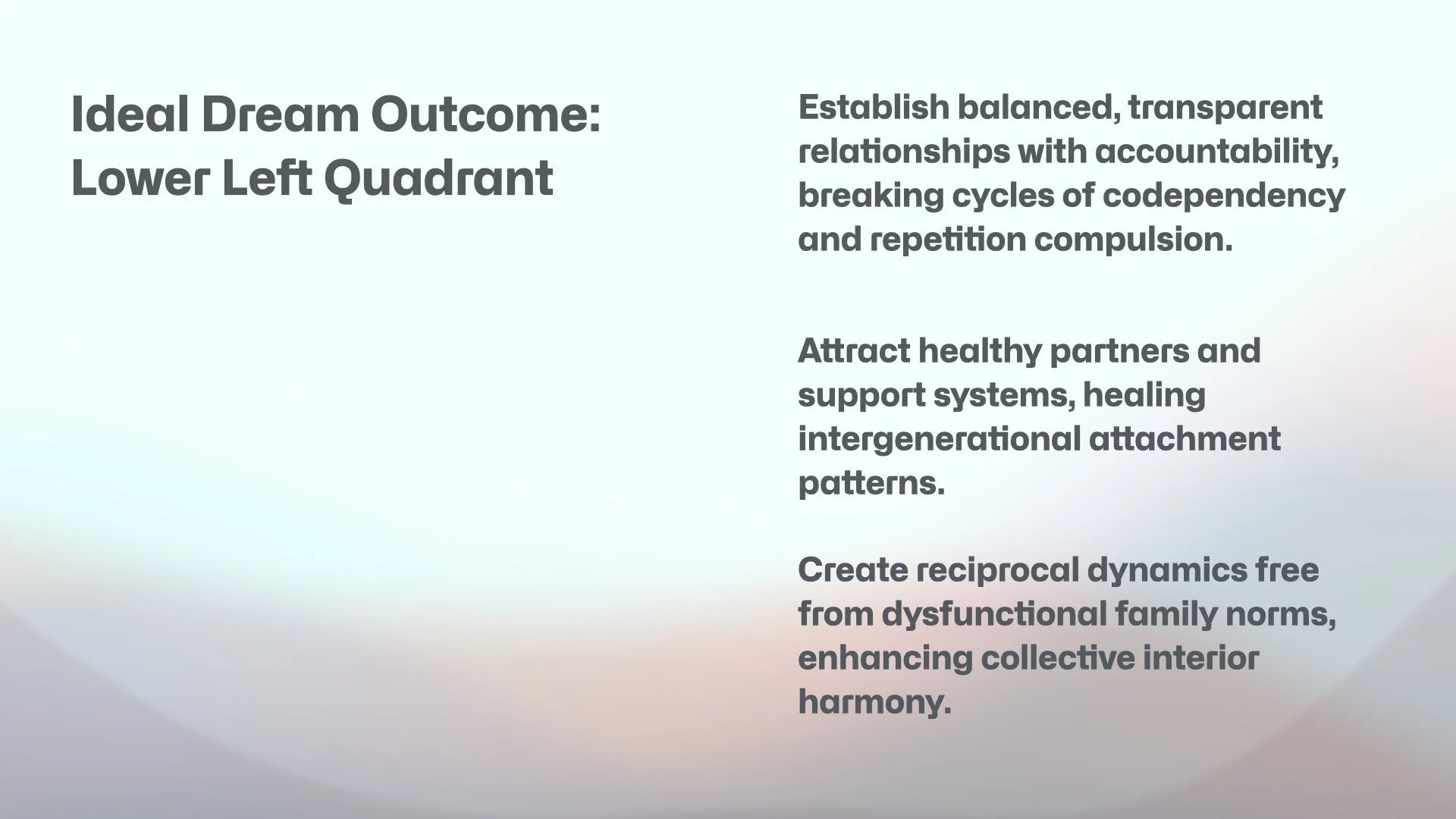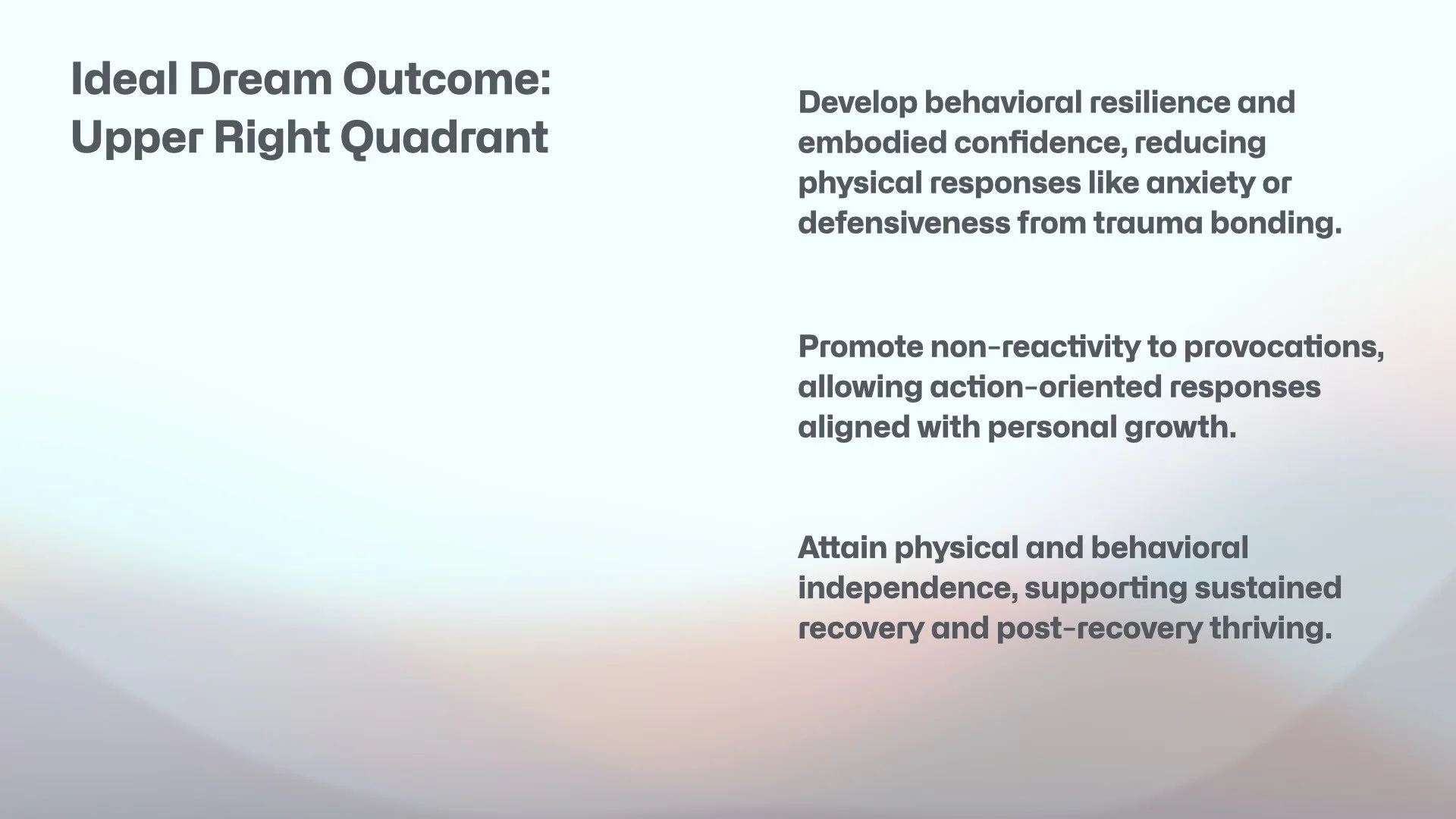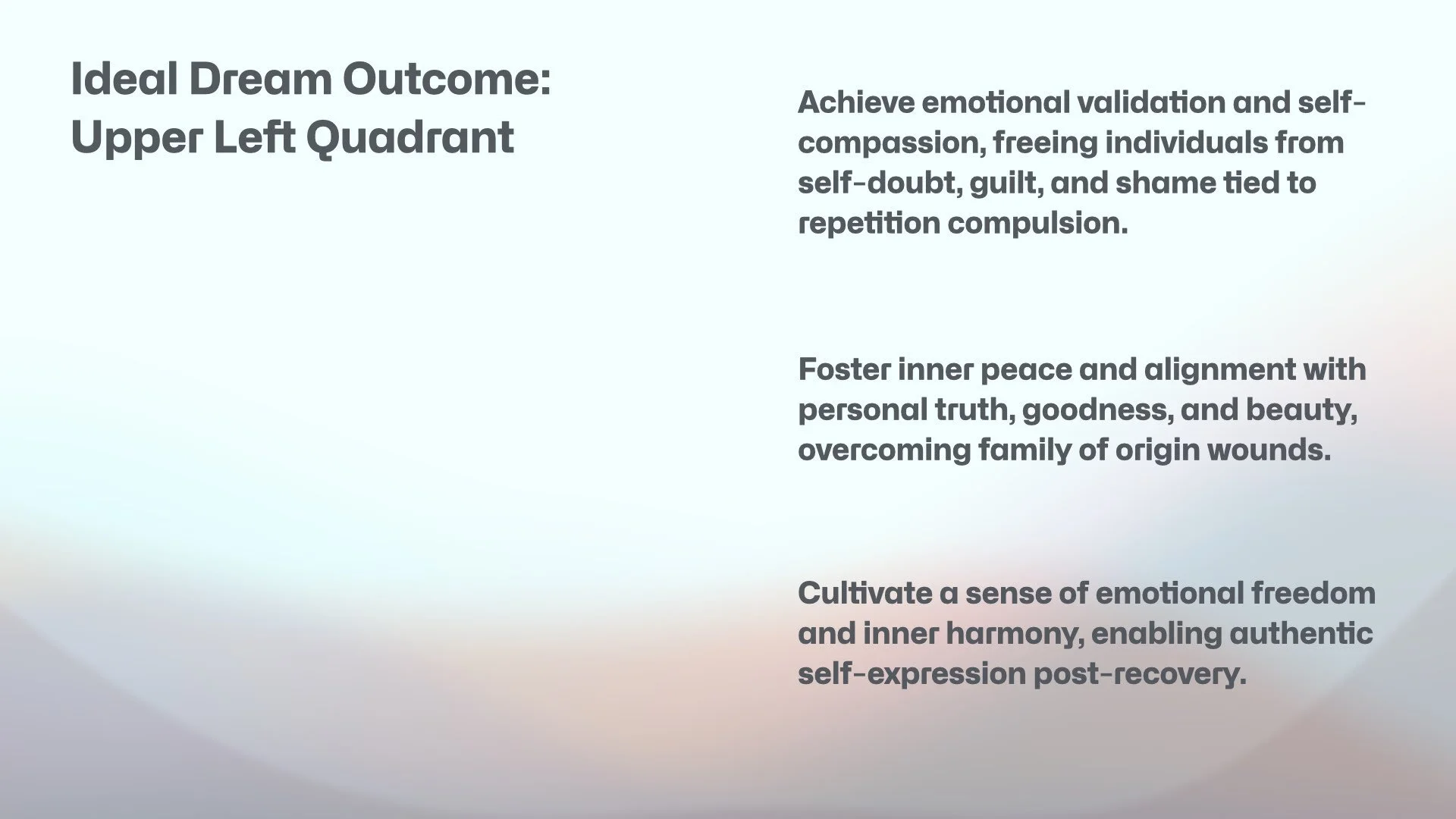Navigating Narcissistic Abuse Recovery with Ken Wilber's Integral Model: A Journey Through the Four Quadrants for Healing and Growth
Introduction
Greetings. I am Blake Anderson, a registered social worker and therapist based in Toronto, Ontario. This blog post complements my YouTube video by introducing Ken Wilber's Integral Model, with a focus on its four quadrants. Grounded in Wilber's AQAL framework (Ken Wilber's Integral Theory), this model offers a comprehensive, holistic lens for comprehending personal growth and recovery, particularly for individuals impacted by narcissistic abuse, scapegoating, or emotional immaturity. It frames both aspirational outcomes for healing and the prevalent obstacles encountered, drawing on philosophical dimensions of existence to illuminate the multifaceted nature of human experience.
Understanding the Integral Model
Ken Wilber's Integral Model posits that all reality may be analyzed through four quadrants, encompassing distinct yet interconnected dimensions of existence:
- Upper Left: The interior individual, encompassing thoughts, emotions, and beliefs.
- Upper Right: The exterior individual, involving observable behaviors and physiological responses.
- Lower Left: The collective interior, pertaining to shared cultural norms and values.
- Lower Right: The collective exterior, addressing social systems and environmental structures.
The left quadrants emphasize interior aspects—individual and collective—while the right quadrants address exterior manifestations. This framework provides a philosophical and therapeutic foundation for understanding recovery from abusive dynamics, fostering a holistic perspective on healing, recovery, and forward growth.
Core Concepts in Healing and Recovery from Narcissistic Abuse
To contextualize this model, consider key psychological concepts frequently observed in therapeutic practice. Repetition compulsion, as articulated by Freud in Beyond the Pleasure Principle, describes the subconscious reenactment of unresolved traumas, often manifesting in repeated patterns that clients seek to interrupt.
Trauma bonding entails a profound emotional attachment to an abuser, sustained by cycles of abuse interspersed with affection, reinforced through intermittent reinforcement and neurochemical responses like dopamine surges and cortisol lows. This creates an addictive dynamic, mirroring childhood survival dependencies and exacerbated by isolation and power imbalances.
Cognitive dissonance arises when victims grapple with conflicting beliefs—rational awareness of abuse alongside hopes derived from kindness—intensifying confusion and loyalty.
Family of origin wounds refer to unresolved childhood injuries shaping adult relationships, as explored in Vienna Pharaon's The Origins of You: How Breaking Family Patterns Can Liberate the Way We Live and Love. These include worthiness, trust, belonging, prioritization, and safety wounds, transmitted intergenerationally via parental modeling and internal working models—unconscious scripts influencing attachment styles.
Codependency involves sacrificing one's needs for others' validation, rooted in dysfunctional family enmeshment, loss of autonomy, and hyper-responsibility, often stemming from narcissistic or emotionally immature caregiving.
These concepts represent patterns prevalent among clients, underscoring the need for integral approaches to address their philosophical and existential underpinnings.
Ideal Outcomes for Recovery Using the Four Quadrants
The upper left quadrant targets interior individual aspects, such as emotions and internalized shame from family wounds. The upper right addresses exterior behaviors, including anxiety rooted in trauma bonding. The lower left and right encompass collective dimensions: cultural norms, family dynamics, and societal impacts influenced by intergenerational patterns and codependency.
Ideal outcomes include: In the upper left, emotional validation, self-compassion, and inner harmony, overcoming self-doubt and enabling authentic expression. In the upper right, behavioral resilience, non-reactivity, and physical independence. In the lower left, balanced relationships, breaking codependency, and healing attachment patterns. In the lower right, systemic independence, reputation reclamation, and defiance of societal pressures like "family first" ideals, ensuring authentic stability.
These ideals serve as philosophical beacons; clients often oscillate between challenges and progress, yet aiming here fosters defiance and growth, as observed in therapeutic outcomes.
Common Challenges in Narcissistic Abuse Recovery Across the Quadrants
Challenges manifest distinctly: Upper left involves self-doubt, gaslighting confusion, emotional depletion, guilt, shame, disenfranchised grief, and inner child conflicts, perpetuating undifferentiation. Upper right includes boundary difficulties, no-contact struggles, reactivity (fight-flight-freeze), anxiety, depression, and physical health impacts. Lower left features repetition compulsion attracting narcissistic patterns, ostracization fears, reconciliation fantasies, and Bowen triangles in family dynamics. Lower right encompasses societal reconciliation pressures, smear campaigns, dysfunctional hierarchies, and barriers to independence, heightening mental health risks.
These reflect existential entanglements common in practice, varying by individual.
Solutions for Overcoming Challenges in Healing from Emotional Immaturity and Scapegoating
Solutions integrate philosophical and therapeutic strategies: For the upper left, implement reality testing—embracing ontology as the study of being—to counter doubt, alongside self-compassion, grief processing for energy reclamation, and inner child empathy to address insecurities.
Upper right emphasizes boundary fortification, coping mechanisms, embodied resilience training, and holistic wellness safeguards.
Lower left involves pattern interruptions, healthy attraction strategies, ally building, limitation acceptance, and AQAL-informed Bowen techniques.
Lower right promotes cultural defiance, intrinsic motivation, reputation strategies without external validation, and integrated mental health protections.
These approaches, drawing on philosophical acceptance of truth, facilitate breaking cycles and self-regulation.
Conclusion
This walkthrough illustrates the Integral Model's utility in navigating narcissistic abuse recovery, trauma bonding, and family wounds. As a therapist informed by philosophy, I view healing as an existential journey toward wholeness. For deeper exploration, I offer therapy in 6- to 12-session contracts. To break cycles and realize potential, consider my Scapegoat Recovery Course bundled with Design Your Personal Manifesto, including videos, worksheets, and tools on trauma bonding and gaslighting. May this guide illuminate your path. If resonant, comment on how the quadrants apply to your journey—which presents the greatest challenge?

